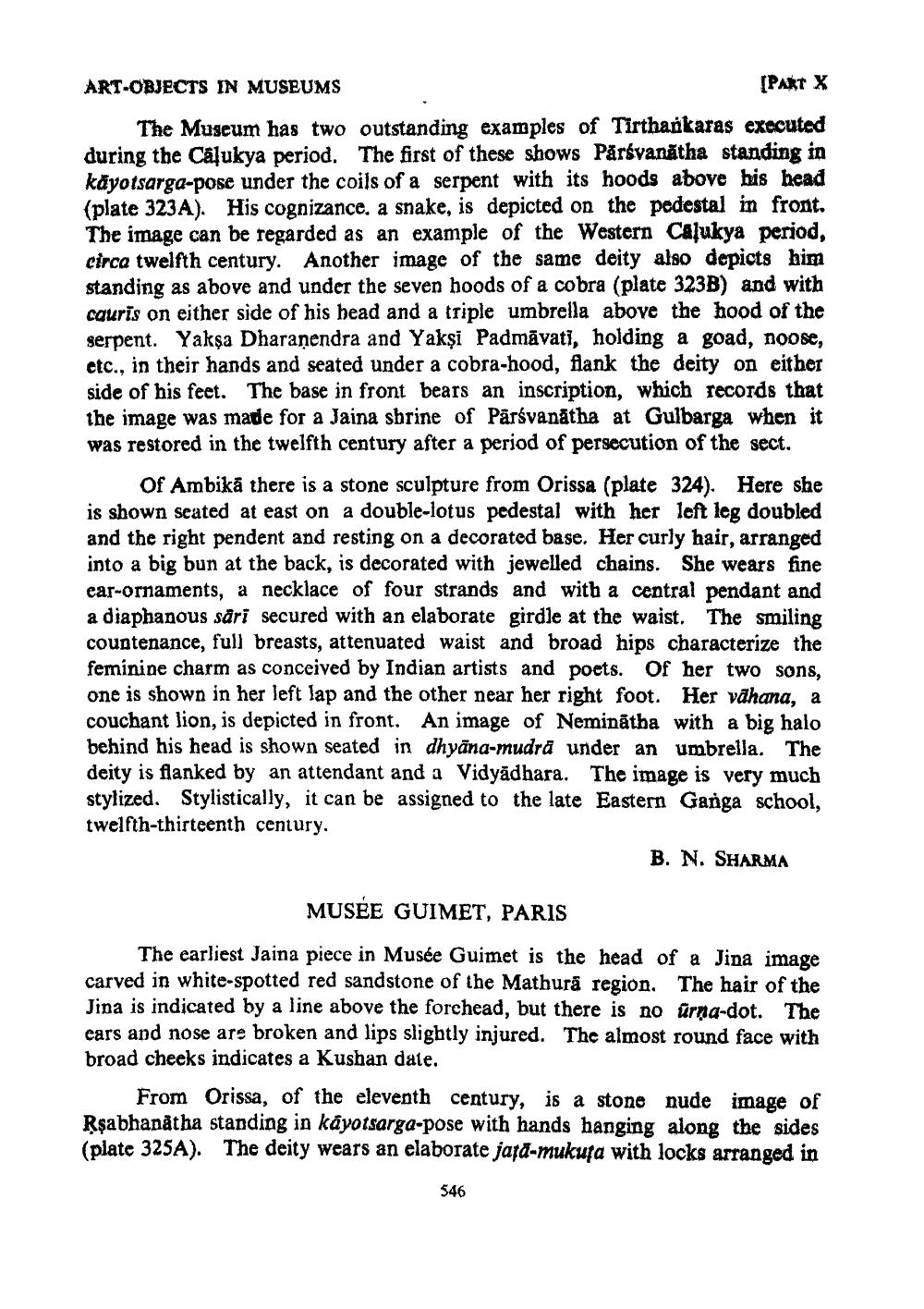________________
ART-OBJECTS IN MUSEUMS
[PART X
The Museum has two outstanding examples of Tirthankaras executed during the Calukya period. The first of these shows Pārsvanatha standing in kayotsarga-pose under the coils of a serpent with its hoods above his head (plate 323A). His cognizance, a snake, is depicted on the pedestal in front. The image can be regarded as an example of the Western Calukya period, circa twelfth century. Another image of the same deity also depicts him standing as above and under the seven hoods of a cobra (plate 323B) and with cauris on either side of his head and a triple umbrella above the hood of the serpent. Yaksa Dharanendra and Yakşi Padmavati, holding a goad, noose, etc., in their hands and seated under a cobra-hood, flank the deity on either side of his feet. The base in front bears an inscription, which records that the image was made for a Jaina shrine of Pärsvanatha at Gulbarga when it was restored in the twelfth century after a period of persecution of the sect.
Of Ambika there is a stone sculpture from Orissa (plate 324). Here she is shown seated at east on a double-lotus pedestal with her left leg doubled and the right pendent and resting on a decorated base. Her curly hair, arranged into a big bun at the back, is decorated with jewelled chains. She wears fine ear-ornaments, a necklace of four strands and with a central pendant and a diaphanous sari secured with an elaborate girdle at the waist. The smiling countenance, full breasts, attenuated waist and broad hips characterize the feminine charm as conceived by Indian artists and poets. Of her two sons, one is shown in her left lap and the other near her right foot. Her vahana, a couchant lion, is depicted in front. An image of Neminatha with a big halo behind his head is shown seated in dhyana-mudra under an umbrella. The deity is flanked by an attendant and a Vidyadhara. The image is very much stylized. Stylistically, it can be assigned to the late Eastern Ganga school, twelfth-thirteenth century.
B. N. SHARMA
MUSÉE GUIMET, PARIS
The earliest Jaina piece in Musée Guimet is the head of a Jina image carved in white-spotted red sandstone of the Mathura region. The hair of the Jina is indicated by a line above the forehead, but there is no ürṇa-dot. The cars and nose are broken and lips slightly injured. The almost round face with broad cheeks indicates a Kushan date.
From Orissa, of the eleventh century, is a stone nude image of Rṣabhanatha standing in kayotsarga-pose with hands hanging along the sides (plate 325A). The deity wears an elaborate jaja-mukuta with locks arranged in
546




